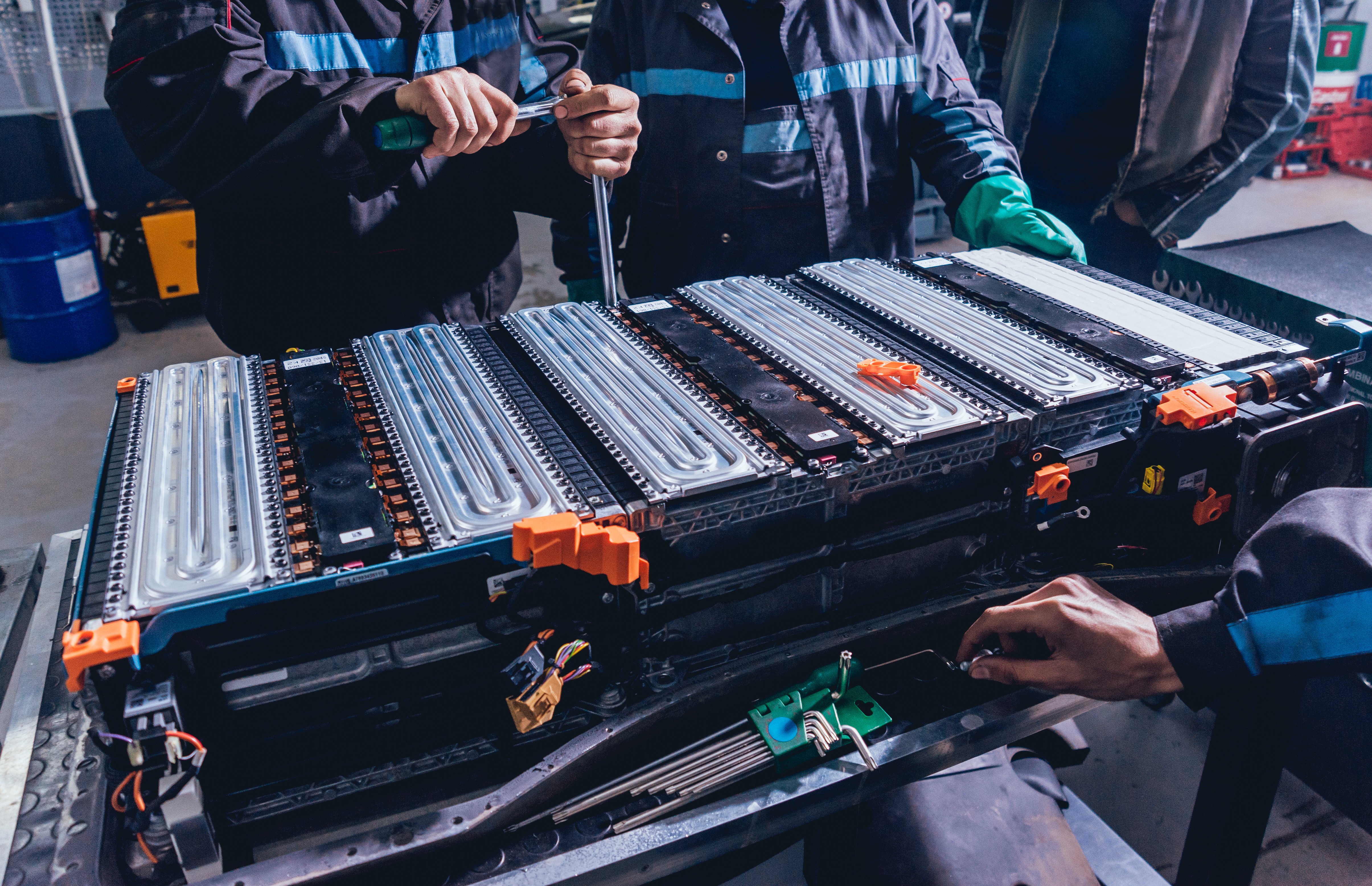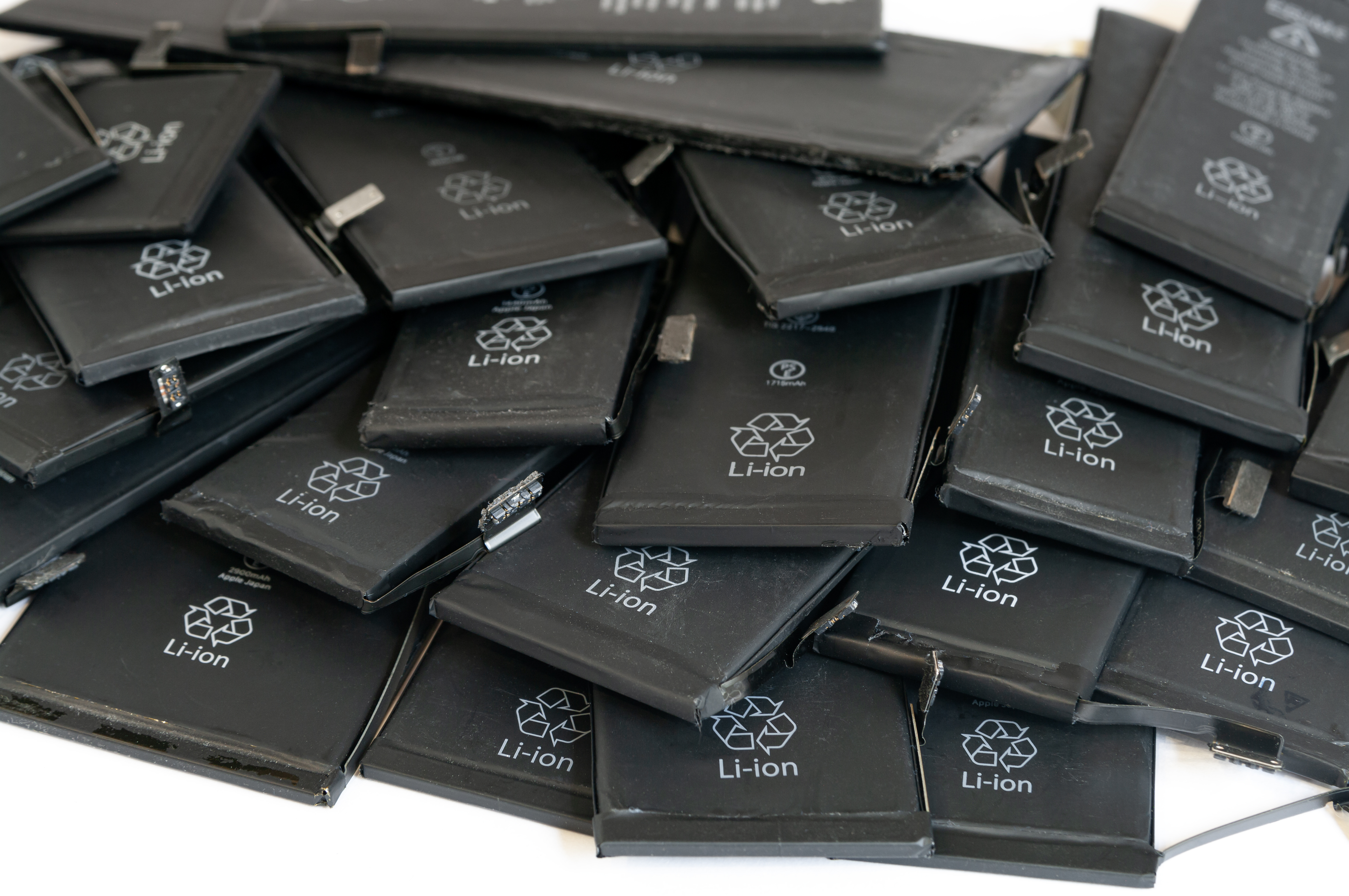Reneos: the European tailor-made solution for end-of-life batteries
Reneos is a European network specialising in the collection and recycling of batteries, and offering tailor-made solutions. Read more about it here
The greener our thinking becomes, the more lithium-ion batteries enter the scene to power this sustainable dream. But as the numbers are rapidly growing, two major challenges are staring us in the face. Firstly, how will we keep up with the rising demand if the required raw materials are getting harder to come by? And secondly, how will we protect the environment from the potentially immense battery waste? The simple answer to both questions is: recycling.
As straightforward as it may sound, efficient recycling on an international scale is a huge challenge in itself. It’s not just about finding the right recycling process, the batteries need to also effectively find their way to the recycler and move smoothly through a recycling chain that closes the loop for battery production.
How efficient is the end-of-life chain for lithium-ion batteries today? And what can we improve for the future? Find out in this article.
Lithium-ion batteries play an indispensable role in the sustainable future we are all so keen to build. But for their manufacturing, certain raw materials are needed, such as lithium, cobalt and other precious metals, which are not always easy to come by.
Whether they are rare, expensive to import or mined in unethical circumstances, the less than ideal situation has raised a pressing question: can’t we obtain these materials in another way?

The answer is yes, we can. Because many of these raw materials are already circulating in our own economy, tightly encased in battery packs that will soon reach end-of-life. If we can extract them efficiently, we’re sitting on a gold mine of valuable materials that can be obtained through recycling.
But that is not the only motivation. Recycling also prevents harmful substances, like cobalt and fluoride, from being dispersed in nature. In other words, it protects the environment. This has been a known priority for the European Union, which will translate into a new European Battery Regulation for its Member States, to be published shortly.
The general perception in Europe is that lithium-ion battery recycling is not going particularly well. The media regularly report that less than 5% of all lithium-ion batteries in the world are recycled. However, according to the research of Hans Eric Melin at Circular Energy Storage, this is not true. Then where does this story come from?
Lithium-ion batteries usually have a longer lifespan than other batteries and are often built into equipment, meaning they cannot easily be disposed of separately by the user. Melin states: “This contributes to the fact that it takes a longer time for the batteries to reach recycling and that they are exported to a greater extent than other batteries for reuse purposes.” This means that the bulk of lithium-ion batteries are not recycled in the country of the manufacturer or importer, or not even in Europe. “This has caused a perception that recycling is underdeveloped while it in fact works well. At least in the countries where the batteries end up, primarily in China and South Korea.” (H.E. Melin, 2019)
So let’s take a look at the current recycling landscape for lithium-ion batteries that reach end-of-life in Europe.
When it comes to lithium-ion battery recycling, China is the absolute hotspot. It has close to 30 companies which recycle lithium-ion batteries, along with an impressive technical know-how.
“Today, there are over 50 companies around the world which recycle lithium-ion batteries on some scale, from small laboratory plants to full-scale factories. Most companies are located in China, followed by South Korea, EU, Japan, Canada and the United States.” (H.E. Melin, 2019)
Europe has about ten companies that recycle lithium-ion batteries in different ways. The recovery efficiency is lower than in China and South Korea, because the volumes are lower and extracting all substances is not profitable.
However, we may be on the verge of a turnaround. With the exponential growth of lithium-ion batteries on the European market, there may be a critical mass of material available to feed large recycling operations in Europe. More batteries to recycle means more leeway to build up efficient plants and sustainable streams of material. (resource-recycling.com, 2018)
Good news for the future of lithium-ion batteries: with the current available recycling technologies we can already achieve very high efficiencies. The best recyclers are able to recover:

Obviously, not all recycling companies achieve these high recovery rates, but these numbers tell us one thing: it’s possible. If we keep investing in research and development of recycling techniques, the future of battery recycling is looking bright!
(* It is technically possible to recycle lithium and manganese, but this is currently not economically profitable.)
Wouldn’t it be great if we could simply say ‘pyrometallurgy’ or ‘hydrometallurgy’, and perfect that method? Unfortunately, reality is more complex. The compositions of the batteries vary and so do the recycling processes. Every company has its own unique way of recycling.
In China the methods are mainly hydrometallurgical and the main products are precursors and battery chemicals, whereas in Europe we use pyrometallurgical, hydrometallurgical and mechanical methods, often in combination.
Researchers of these methods make no evaluations of which is more state-of-the-art. They all seem to work well for their specific purposes. However, there's a whole new domain they all agree is worth investigating: biological recycling methods. These are considered to have great potential, because of their limited environmental impact.
Read more on the recycling process in this article: “How lithium-ion batteries are recycled”
The pessimistic public perception about lithium-ion recycling efficiency could also have something to do with the fact that there are some knowledge gaps, caused by a lack of research in certain areas of the recycling chain.
We know a lot about the recycling process itself, but there are some other crucial steps before and after that, which are just as important to the final outcome.
Let’s discuss some of the weak links potentially disrupting a closed loop for lithium-ion battery recycling.
Collection is a very important part of the recycling chain, as it sits right at the beginning. If batteries are not collected, there is nothing to recycle. Both individuals and companies tend to hoard used batteries for too long or dispose of them in the wrong way, because they don’t know where to go or how to comply with all the regulations. (Can you think of a solution? We can. Read to the end to find out.)
Even though sorting is a crucial step towards recycling, there’s not much information out there on the most efficient sorting method for lithium-ion batteries. It is often regarded as an obstacle and an almost insurmountable problem.
Most batteries today are not built with recycling in mind. Yet this is exactly what sustainable-minded manufacturers should do. In order for recycling and reuse to be effective, many things can be done at the manufacturing stage to make these processes easier. They could create modular pack designs that allow cells or modules to be easily disassembled for repair, reuse or recycling, they could come up with methods for attaching and connecting cells, and they could standardise materials and dismantling procedures.
There are many interesting projects in Europe aiming to improve the sustainability of batteries. One of them is Battery2030:
“BATTERY 2030+ is the large-scale and long-term European research initiative with the vision of inventing the sustainable batteries of the future, providing European industry with disruptive technologies and a competitive edge throughout the battery value chain and enabling Europe to reach the goals of a climate-neutral society envisaged in the European Green Deal.” (battery2030.eu)
BATTERY2030+ aims to create a generic toolbox for transforming the way batteries in Europe are developed and designed.
The EU also supports many projects that advance batteries technologies. You can find an overview here.
Currently the legislative framework for batteries is built around the European Commission’s Directive 2006/66/EC, but the EU has realised that this document is no longer sufficient in today’s context. A Directive is not binding, so in order to have true impact, what’s needed is a binding Regulation that levels the playing field for all European countries, taking into account the growing numbers of lithium-ion batteries. That new Regulation is currently being drafted.
You can read all about the proposal in this article: “Finally, the new Battery Regulation will level the playing field in Europe”.
At Reneos we are well aware of the weak links in the recycling chain, and we’re happy to offer solutions in the domain of collection and sorting of lithium-ion batteries.
Reneos has the largest network of EV battery collectors and recyclers in Europe. Our local experts take care of labeling, packing, storing and transportation of EV batteries. We offer tailor-made solutions in compliance with the local legislation, in order to unburden companies of their battery responsibilities.
In conclusion, with the combination of a strong up-to-date EU Regulation, innovative projects and the network of experts Reneos can provide, we can slowly but surely build a stronger recycling chain. The combined efforts of lawmakers, forward-thinking initiatives, manufacturers and recyclers will get us closer and closer to fully closing the loop of lithium-ion batteries in Europe.